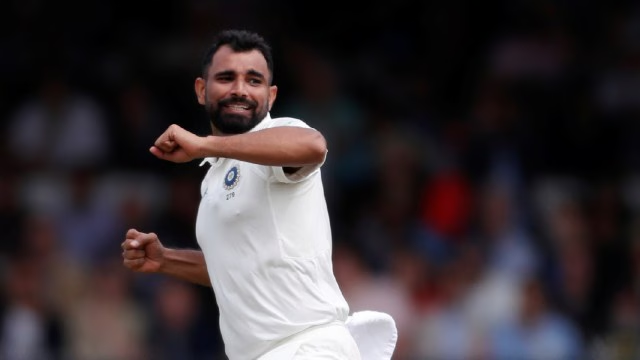The 0-3 home series whitewash at the hands of New Zealand and the generally poor returns of the first-choice XI seem to have induced a bit of panic in Indian team management. It can be seen in the decision to send KL Rahul and Dhruv Jurel, who were largely on the periphery against the Kiwis, to Australia early to get some game time there. And with pacers expected to play a big role during the summer Down Under, they are fervently hoping that Mohammed Shami will be fit to play at least some part in the Border-Gavaskar Trophy series.
The 34-year-old pacer returned to action in the Ranji Trophy game against Madhya Pradesh in Indore after almost a year – since the 50-over World Cup final – with an ankle injury, and provided cause for optimism. His seven wickets and a crucial 37 with the bat contributed greatly to Bengal’s 11-run win, with Rajat Patidar being one of his victims in the second innings with his furniture disturbed. Given his stellar role in the series win in Australia in 2018-19 (16 wickets in four Tests at an average of 26.18), the Indian think tank would want the crack pairing of Jasprit Bumrah and Shami to get together again. The Ranji game was his first on the comeback trail, and it would be unfair to expect too much from the veteran from the get-go in Australia. But given the precarious situation India find themselves in, with respect to their World Test Championship aspirations, the desperation is understandable.
Shami, at his fittest, can bowl at a quick enough pace and gets skiddy bounce from a good length, virtues that are useful on Australian pitches. He had to return home with a fracture after the first Test in 2020-21, but does have fond memories of Australia.
It may be a bit optimistic to expect Shami to play the first two Tests, but a five-Test rubber gives him sufficient opportunity to make an impact if he is on song. Perth and the day/night Test in Adelaide would have been ideal settings for Shami, but a bowler of his skill and ability doesn’t always need conditions to be in his favour.
In Shami’s absence, Bumrah will lead the pace attack and while he is a once-in-a-generation bowler, fast bowlers are known to hunt in pairs, and their partnership would be a formidable challenge for any batting line-up, especially if there’s some help in the wicket. Mohammed Siraj has had his best performances away from India, while Akash Deep and Prasidh Krishna are worthy back-ups. But after their recent struggles, Shami’s availability would also be a morale-booster for the team. After the back-to-back series wins in Australia, it looks an uphill task, and any positive development would be welcome.
Spin problem
India’s famed spin attack couldn’t prevent a 0-3 reversal on their own pitches against the Black Caps. Ravichandran Ashwin and Ravindra Jadeja have had stellar careers, but are coming towards the end of their playing days. Washington Sundar, of late, has shown promise, but all three are finger-spinners, not a tribe that has historically enjoyed Australian conditions. Nathan Lyon is an exception, with 259 wickets in 67 home Tests at an average of 30.88.
Ashwin, especially, has the skills to transcend conditions, but Aussie pitches have been friendlier to wrist-spinners, as Shane Warne’s record there would testify. In that regard, Kuldeep Yadav would be a big miss for India.
A left-arm wrist-spinner is a rarity in international cricket, and not all batsmen are able to pick the variations, the lower order being most vulnerable. Kuldeep played just one Test on the 2018-19 trip, but his five-wicket haul in Sydney so impressed then-head coach Ravi Shastri that he designated him as India’s lead spinner overseas, even superseding Ashwin. However, Kuldeep has had a stop-start international career, only playing 13 Tests since 2017.
He had rejuvenated his career of late with more zip, pace and dip in his bowling. He would have been integral to India’s prospects as the Australian batting is also not that settled, especially vulnerable to the variations a left-arm wrist-spinner brings. But a groin injury has been a big enough concern to prompt the selection panel to leave him out so that he could get proper treatment.
A wrist-spinner is an attacking option with the bounce that Australian pitches offer. The Indian squad now doesn’t have one, so whichever tweaker is included in the XI now will be largely expected to hold an end up in support of the pace bowlers.
But regardless of the bowling attack India puts on the park, they will have to get enough runs on the board to have a chance. The pitches they played on against New Zealand weren’t always the easiest to bat on, and surfaces in Australia should be more amenable, especially when the Kookaburra ball loses its shine after around 20 overs. A quality wrist-spinner is invaluable in such circumstances, but the visitors will have to do without one.
In such a scenario, reverse-swing comes into the picture and Shami could be a big help in that regard too.

